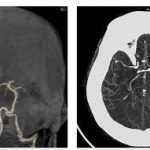Propofol infusion syndrome is a very rare, serious complication during long-term anesthesia with propofol. The syndrome typically presents with abnormal heart rhythms, problems with the striated heart, skeletal and diaphragm muscles, and lactic acidosis, which is acidosis caused by lactic acid. The exact causes of the propofol infusion syndrome are not (yet) sufficiently understood, it is probably multifactorial and long-term anesthesia with a dosage of propofol.
What is Propofol Infusion Syndrome?
Propofol (2,6-diisopropylphenol) with the chemical molecular formula C12H18O is a very commonly used intravenous anesthetic. It is used for induction and maintenance of anesthesia and is also suitable for total intravenous anesthesia (TIVA) and for the maintenance sedation of patients. See gradphysics for Hypoxia in English.
The drug has a purely hypnotic effect, i.e. it induces sleep and has no analgesic (pain-relieving) properties. It normally causes hardly any unwanted side effects and is very well tolerated. Propofol is valued by anesthetists because the depth of the anesthesia can be easily controlled with the agent.
In very rare cases, however, serious reactions can occur, which are summarized under the name Propofol Infusion Syndrome (PRIS). The likelihood of the syndrome occurring appears to be slightly increased with long-term infusions of more than 24 hours and in children. Likewise, relatively high dosages of the anesthetic of more than 5 mg/kg/h favor the propofol infusion syndrome.
Causes
The causes of propofol infusion syndrome have not (yet) been sufficiently clarified. A multifactorial causal complex that affects the fatty acid metabolism in the mitochondria and the decoupling of the citrate cycle is considered very probable. There is obviously a disturbance in the transport of fatty acids into the matrix of the mitochondria.
This leads to a lack of energy supply due to a disruption in mitochondrial fatty acid oxidation. This thesis is also supported by the symptoms that appear in patients with the very rare genetically caused deficiency of active acyl-CoA dehydrogenase.
Myolysis of the striated muscles (rhabdomyolysis) as well as cardiac insufficiency, cardiac arrhythmia and metabolic acidosis also develop in these patients. The missing enzyme, as the cause, leads to a comparable disturbance of the lipid metabolism as in the case of PRIS.
Symptoms, Ailments & Signs
The propofol infusion syndrome is initially manifested by a variety of non-specific symptoms. The first signs can be cardiac arrhythmias. These are usually atrio-ventricular blockages, i.e. problems in the conduction of the contraction impulse for the atria, triggered by the sinus node, through the AV node to the ventricles.
Typically, the ECG shows a broadening of the QRS complex or the contraction signal is completely blocked by the AV node, so that at best the very slow ventricular replacement rhythm can step in. More serious problems arise because of the developing rhabdomyolysis, which leads to the breakdown of striated muscle tissue. This means that the heart and skeletal muscles and the diaphragm are particularly affected.
Propofol syndrome also triggers metabolic lactic acidosis, and a greatly increased excretion of myoglobin in the urine (myoglobinuria) is probably the cause of renal insufficiency. In some cases, pathologically increased levels of triglycerides in the blood were also found (hypertriglyceridemia).
Diagnosis & course of disease
Propofol infusion syndrome usually occurs during the course of long-term sedation or long-term anesthesia, so that important cardiovascular parameters are under constant observation. The first signs of the syndrome are heart rhythm problems, especially AV blocks, which can be associated with a very slow heartbeat (brachycardia).
If lactic acidosis is also detected in the blood serum and important cardiac enzymes such as creatine kinase (CK), glutamic-oxaloacetic transaminase (GOT), glycogen phosphorylase BB (GPBB) and others are pathologically elevated, the suspicion of propofol infusion syndrome is strengthened. If untreated and if propofol sedation or propofol anesthesia is continued, the prognosis is very poor due to the expected cardiac arrest.
Complications
Due to the propofol infusion syndrome, those affected suffer from heart problems in most cases. In the worst case, heart failure can also occur if treatment of the propofol infusion syndrome is not initiated in good time. Furthermore, there are also complaints in the tissue of the diaphragm. Renal failure can also occur if propofol infusion syndrome is not treated.
Those affected are then dependent on dialysis or a kidney transplant. If this is not treated, the patient usually dies. Complications usually only arise if surgery is continued and no treatment is initiated. In most cases, this leads to cardiac arrest.
The drug is replaced with another anesthetic, and in most cases there are no special complications. In severe cases, the treatment must then be completely interrupted. Successful treatment of propofol infusion syndrome also does not lead to a reduction in life expectancy. With an optimized dosage, these symptoms can usually be completely avoided, so that there are no further complications.
When should you go to the doctor?
Naturally, people who are under the influence of propofol can no longer take care of their own health. Propofol infusion syndrome is a complication during anesthesia. It is an irregularity of long-term anesthesia. Due to an existing disorder, the affected person has been in a state for a few days, weeks or months in which there are no conscious options for action on his part.
Since the person concerned is already undergoing medical treatment, the attending physicians or nursing team independently take on the necessary health care steps if irregularities occur. During this time, relatives should maintain close communication with the doctor and the nursing staff.
If there are any abnormalities during the visiting hours, these must be reported to a contact person immediately. In addition, open questions about the patient’s state of health should be asked and comprehensive information about the existing disease should be provided. In many cases, doctors need the consent of relatives to carry out necessary treatment steps. Since the person concerned cannot make decisions about his or her own care, relatives or partners should obtain sufficient information about the overall situation. In some cases, it should be checked whether obtaining a second opinion from another doctor is advisable.
Treatment & Therapy
The most important measure in a diagnosed propofol syndrome is the immediate interruption of the propofol infusion. Propofol must be replaced with another narcotic. In addition to immediately interrupting the propofol infusion, supportive measures are indicated.
The measures consist of an adequate supply of fluids and the administration of catecholamines, which act as stress hormones to maintain blood pressure and increase heart rate. If bradycardia cannot be corrected with medication and AV block persists, pacemaker stimulation can be considered.
In addition, appropriate electrolytic balance should be provided for treatment of lactic acidosis. In some cases, continuous hemofiltration or hemodialysis has proven to be effective because it leads to a massive improvement in symptoms. The early use of hemofiltration as the first-line treatment for PRIS is discussed in the specialist literature.
Cases were also reported in which the (too late) use of hemofiltration no longer led to the desired result. To compensate for the suspected fatty acid oxidation disorder in the mitochondria, care should also be taken to ensure an adequate intake of calories during therapy.
Prevention
Direct preventive measures to avoid propofol infusion syndrome do not exist because before the use of the anesthetic for long-term sedation or long-term anesthesia it is not known whether the patient has the prerequisites for the development of the syndrome. Limiting the dosage of the agent to 4 mg/kg/h can already be considered one of the most important preventive measures.
Limiting chronic anesthesia or sedation with propofol to a maximum of seven days is also a precaution to avoid PRIS. As a precautionary measure, propofol should not be used during pregnancy or breastfeeding. A strict contraindication exists for people suffering from soy allergy.
Aftercare
Propofol infusion syndrome requires consistent clinical monitoring during follow-up. Since the metabolic disorder only occurs when propofol has been administered in prolonged doses, it is strongly recommended to avoid re-administration of propofol. The cardiac and renal insufficiency must heal completely and care must be taken to ensure that sufficient liquid is given.
In acute treatment, the use of dialysis must be considered. Permanent damage to the heart and kidneys cannot be ruled out and require further treatment and stabilization of the patient’s general condition in the follow-up care. After inpatient care, further outpatient check-ups are necessary and the patient’s cooperation with an experienced doctor.
Propofol infusion syndrome as a disease is no longer present after stopping propofol and acute treatment, but it takes some time to determine whether the effects on the patient’s body could be eliminated in time and completely. The patient must be informed in detail and completely about the effects of propofol and must not be sedated again with a propofol infusion or even kept under anesthesia for a longer period of time. It is therefore essential that the person concerned mentions the complication to an anesthesiologist immediately during an informed consent discussion.
You can do that yourself
Once Propofol Infusion Syndrome (PRIS) has set in, there is no longer any self-help option. This is a very rare medical emergency after administration of the anesthetic propofol. The infusion of propofol must be stopped immediately. In addition, supportive measures are often necessary to protect against circulatory collapse and metabolic acidosis.
To compensate for renal failure, hemofiltration or hemodialysis should be considered early on. The symptoms improve rapidly, especially with hemodialysis. After the successful application of these measures, the patient recovers completely. Neither life expectancy nor quality of life are restricted. However, should a situation arise again that makes anesthesia necessary, it is very important for the affected patient to discuss alternatives with the doctor. The doctor must therefore be informed by the patient about the intolerance to normal anesthetics. If PRIS has already occurred once, drugs for sedation with propofol should no longer be used in pain patients.
The only way the patient can reduce the likelihood of PRIS is through diet design. In addition to genetic factors and excessive propofol dosage, PRIS is also favored by long periods of fasting, ketogenic diets and low-carbohydrate nutrition.








